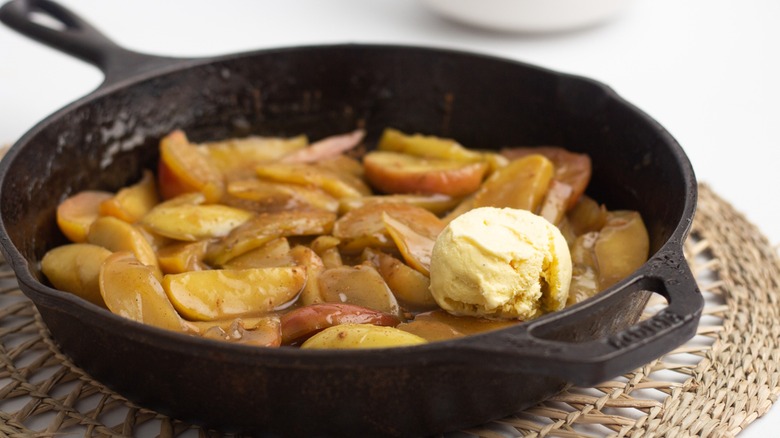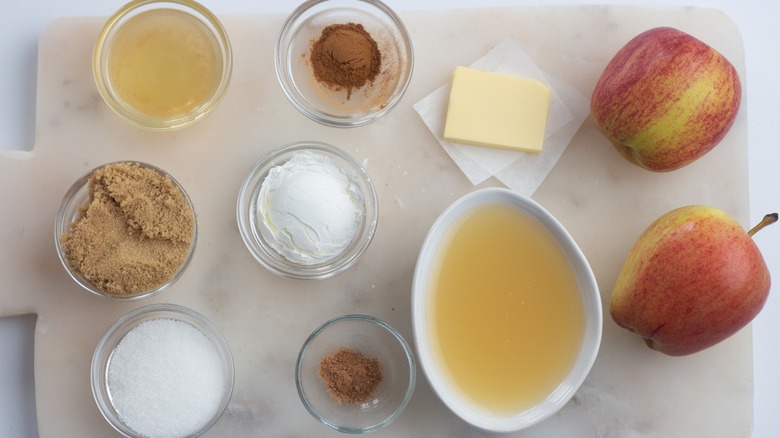Cornstarch Is Key To Copycat Cracker Barrel Fried Apples
If you love apples, you've likely come to cherish the fall months. As the season winds down, grocery stores and farm stands are brimming with apples, the quintessential autumn fruit. The timing is perfect to make Mashed recipe developer Susan Olayinka's Copycat Cracker Barrel Fried Apples recipe. At first glance, you might think that this recipe comes together by merely throwing the ingredients in a pan and cooking them until the flavors come alive. However, the addition of cornstarch at the appropriate time is the key to creating a dish that's rich and saucy.
Cornstarch is one of the most common thickeners used in baking. When added to a liquid and heated to over 200 degrees Fahrenheit, the starchy powder becomes absorbent. The molecules slurp up the water and swell. Once the mixture cools, it stays thick and develops a gel-like quality, which makes this thickening strategy ideal for pies and other sweet fillings that would otherwise run all over your plate.
Flour can also be used as a thickener. However, because it contains gluten and starch, its ability to absorb liquid is slightly hampered. When making the copycat fried apples, cornstarch makes an appearance toward the end of the prep process. The recipe comes together in about a half hour.
Thick filling enhances the richness of fried apples
The only thing better than a crisp, ripe apple is one that's been fried in butter and sugar and simmered in apple juice. For Susan Olayinka's recreation of Cracker Barrel's fried apple recipe, it's key to create a saucy mixture that coats the soft apples. To achieve the perfect consistency, you'll need to make a cornstarch slurry, or a smooth mixture of cornstarch and a liquid. "Do not be tempted to just put the cornstarch in...as it will go lumpy," Olayinka explained.
The recipe developer prescribes apple juice as the liquid in this recipe. The general rule for making a slurry is to use one tablespoon of cornstarch for every cup of liquid. The apples will cook in one cup of apple juice, so Olayinka uses one tablespoon of starch to make her slurry. The liquid you use in your slurry needs to be cold because the cornstarch may clump otherwise.
The cornstarch slurry goes into the pan after all the other ingredients have already cooked for 20 minutes. Once it's added, the apples need to cook for another 20 minutes before they're ready to store in an airtight container or serve up hot. Olayinka suggests serving these apples on pancakes or as filling in an apple pie recipe.

